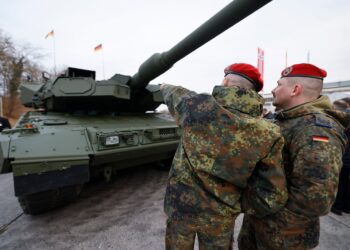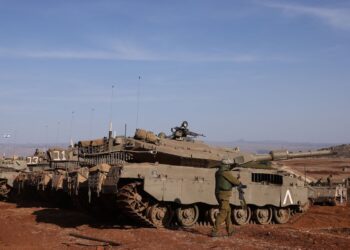The U.S. Army is seeking manufacturers for the XM1208 155mm cluster shell, with plans to produce up to 30,000 rounds annually. A market survey, published on November 20, 2023, outlines the Army’s goals to ramp up production in response to increasing demands spurred by the ongoing conflict in Ukraine.
Currently, the U.S. produces approximately 40,000 artillery shells each month as both the U.S. and European nations navigate challenges in munitions production amid the war. The Army’s market survey indicates that multiple manufacturers can potentially produce the XM1208, and contractors are expected to provide details on their production capacities.
The XM1208 features nine M99 Advanced Submunitions and is compatible with the M109A6/7 Paladin and M777A2 howitzers, boasting a maximum range of around 14 miles. According to the Army’s communications, these submunitions are designed to activate at a predetermined time using an M762/A1 electronic time fuse. They release approximately 1,200 tungsten fragments above the target area upon deployment.
Considerations for safety are paramount, with multiple backup detonation methods in place if the proximity fuze fails. The Army’s pursuit of advanced cluster shells like the XM1208 aims to balance effective artillery use while adhering to international regulations banning hazardous cluster weapons.
Cluster munitions, extensively used date back to World War II, raise concerns about unexploded ordnance, notably with older models demonstrating dud rates as high as 14%. In 2008, the Department of Defense required a maximum dud rate of 1%, a policy reversed in 2017.
The Army is now shifting toward the Cannon-Delivered Area Effects Munition (C-DAEM), which includes both the XM1180 and XM1208 shells to optimize effectiveness against a wider range of targets while addressing unexploded ordnance risks. The Army successfully conducted a test of the XM1180 in March 2024, underlining its commitment to advancing artillery capabilities.
Despite criticism of the Dual-Purpose Improved Conventional Munitions (DPICM), studies suggest the Army will retain it for emergency scenarios due to its tested effectiveness. Researchers indicate that mitigating the dud rate remains a significant challenge for the Army as they develop next-generation munitions.
Michael Peck contributes to Defense News and the Center for European Policy Analysis. With an M.A. in political science from Rutgers University, he is active on social media under the handle @Mipeck1 and can be reached via email at [email protected].











